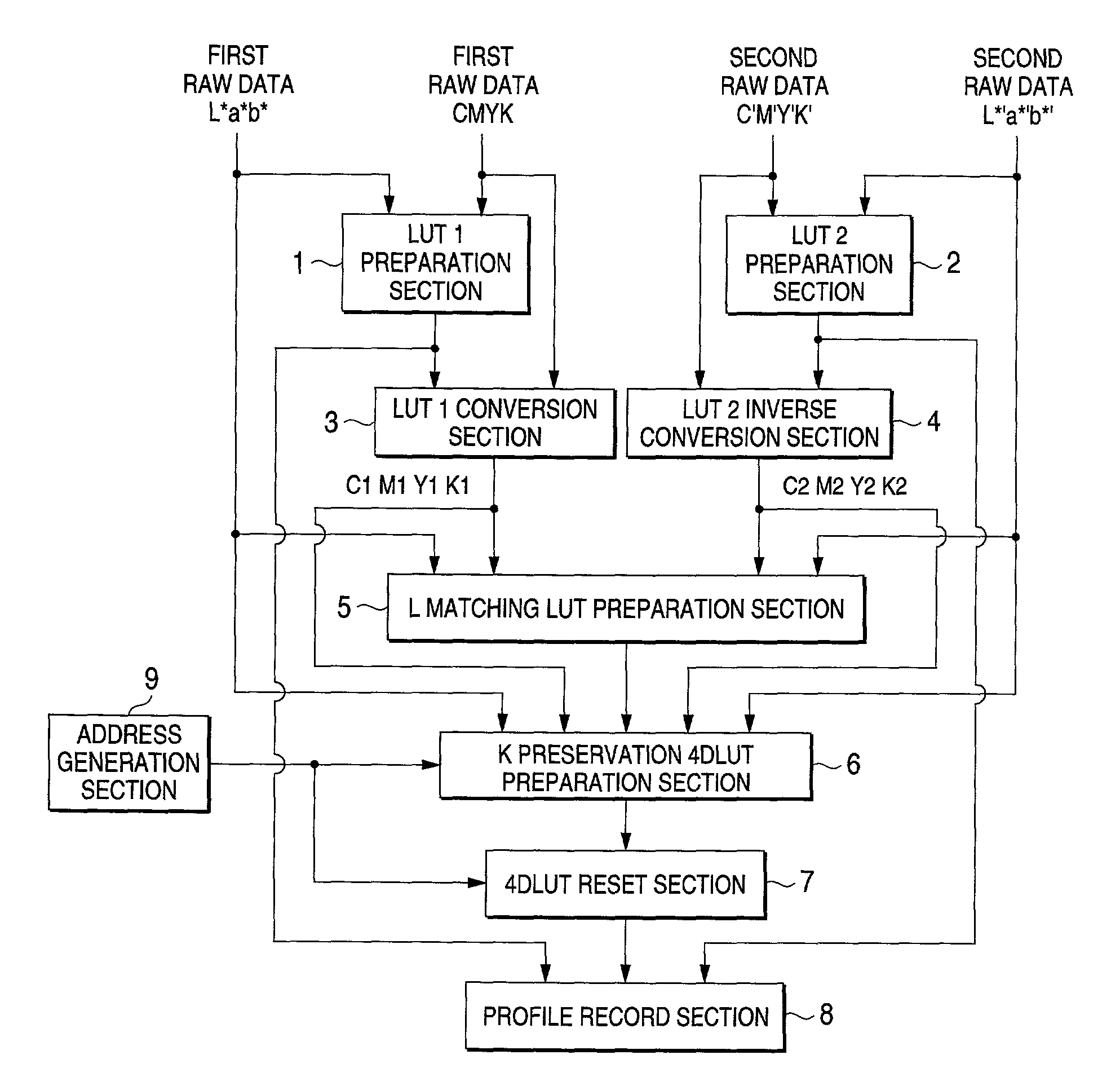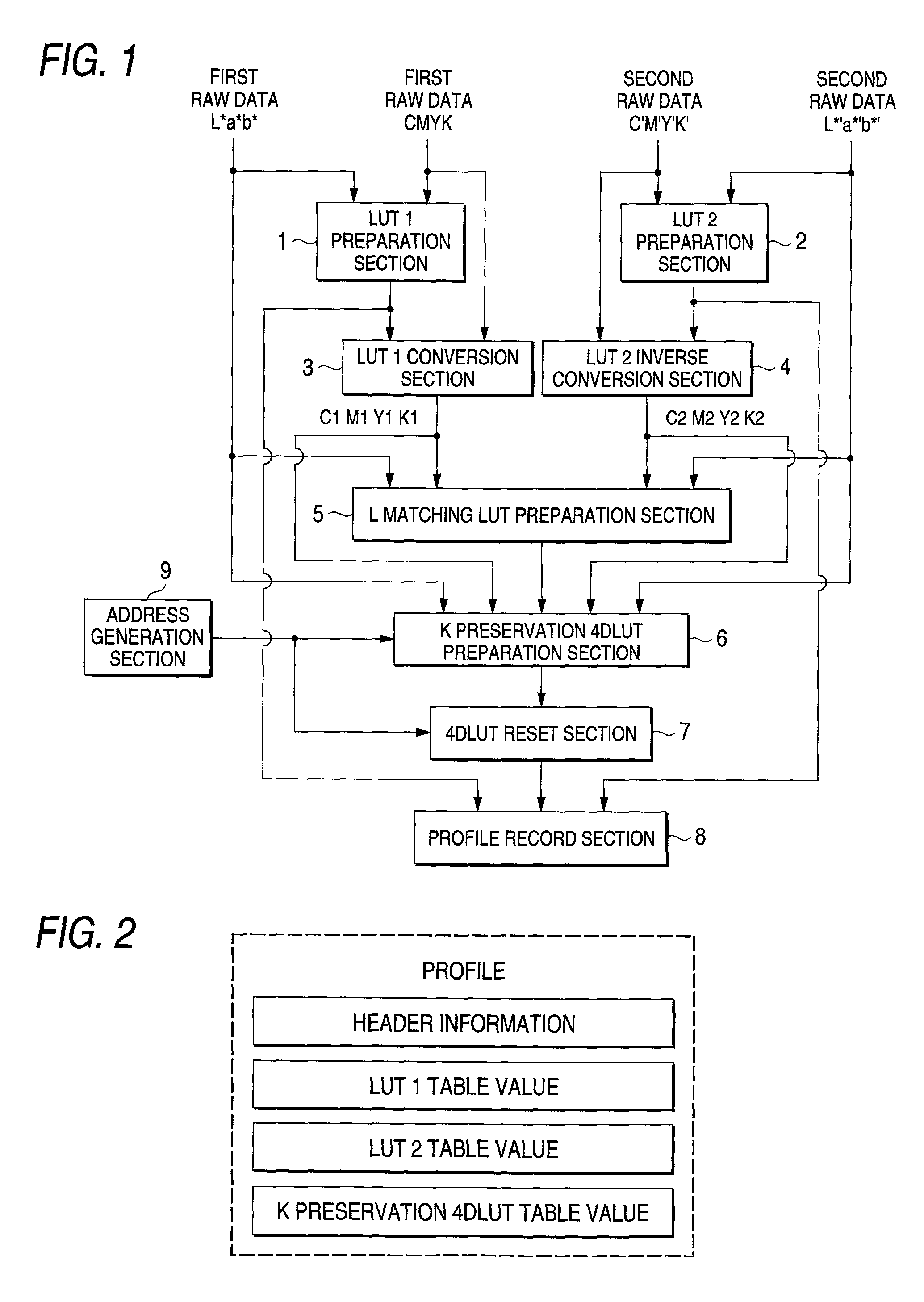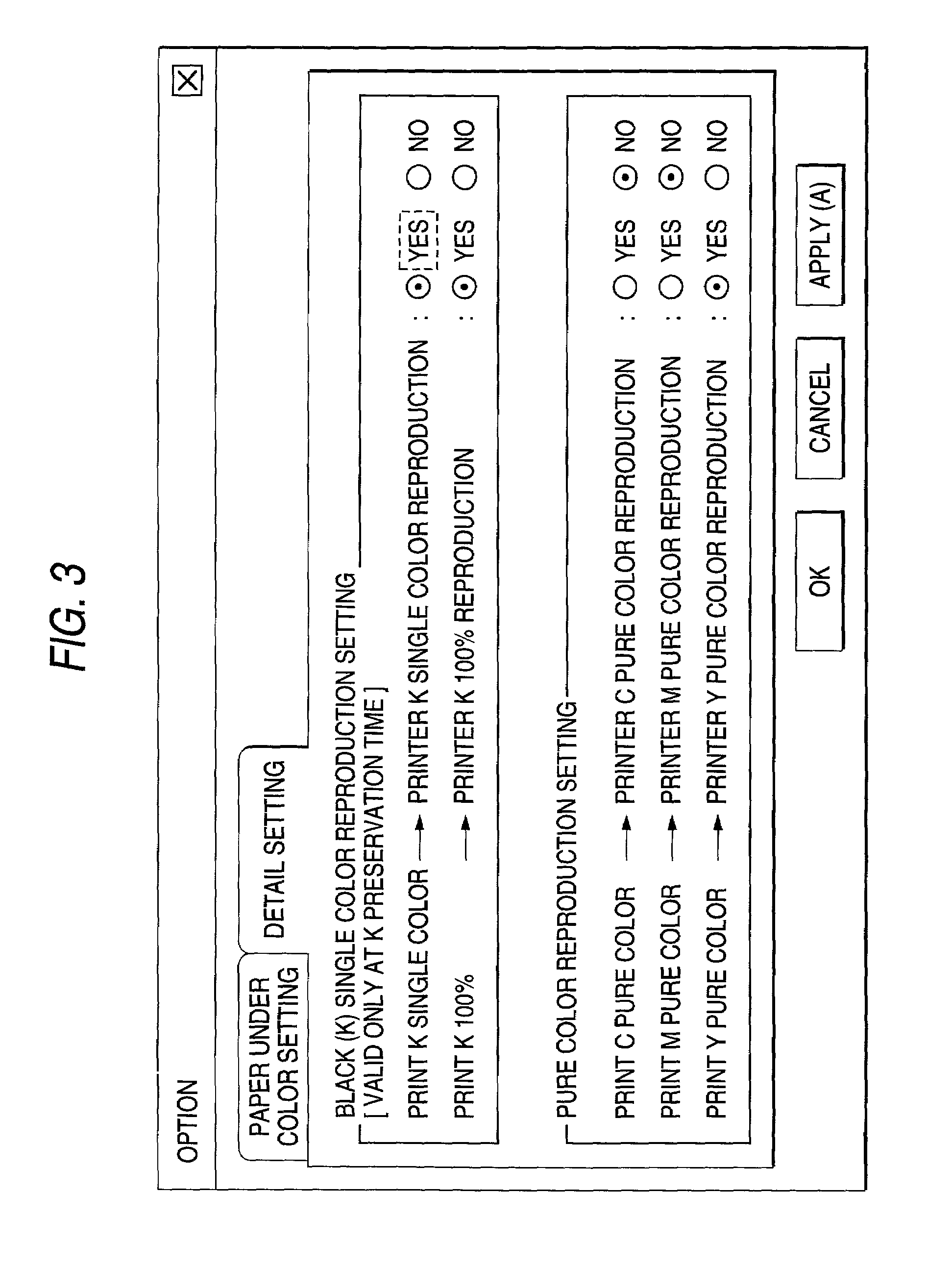Color conversion coefficient preparation apparatus, color conversion coefficient preparation method, storage medium, and color conversion system
a color conversion coefficient and color conversion method technology, applied in the field of color conversion coefficient preparation and color conversion image processing, can solve the problems of poor calorimetric match accuracy, inflexible color chart preparation, loss of information concerning k, etc., and achieve the effect of improving color reproduction and reproducibility, and high color saturation area
- Summary
- Abstract
- Description
- Claims
- Application Information
AI Technical Summary
Benefits of technology
Problems solved by technology
Method used
Image
Examples
first embodiment
[0084]FIG. 1 is a block diagram to show a color conversion coefficient preparation apparatus and a color conversion coefficient preparation method of the invention. In the figure, numeral 1 denotes an LUT1 preparation section, numeral 2 denotes an LUT2 preparation section, numeral 3 denotes an LUT1 conversion section, numeral 4 denotes an LUT2 inverse conversion section, numeral 5 denotes an L matching LUT preparation section, numeral 6 denotes a K preservation 4DLUT preparation section, numeral 7 denotes a 4DLUT reset section, numeral 8 denotes a profile record section, and numeral 9 denotes an address generation section. A first example of the color conversion coefficient preparation apparatus and the color conversion coefficient preparation method for preparing LUT1, LUT2, and 4DLUT as described above can be provided according to the configuration as shown in FIG. 1. Here, a profile is prepared from given first raw data on the input side and given second raw data on the output si...
second embodiment
[0166]The profile read section 41 reads a profile previously prepared in a manner as shown as the first or second embodiment of the color conversion coefficient preparation apparatus and the color conversion coefficient preparation method of the invention described above, for example. The profile read section 41 interprets LUT1, LUT2, and K preservation 4DLUT in the profile and sets a C table value in the LUT1 in the LUT1-C conversion section 42, an M table value in the LUT1 in the LUT1-M conversion section 43, a Y table value in the LUT1 in the LUT1-Y conversion section 44, a K table value in the LUT1 in the LUT1-K conversion section 45, a C table value in the LUT2 in the LUT2-C conversion section 46, an M table value in the LUT2 in the LUT2-M conversion section 47, a Y table value in the LUT2 in the LUT2-Y conversion section 48, a K table value in the LUT2 in the LUT2-K conversion section 49, and a table value in the K preservation 4DLUT in the 4DLUT conversion section 50.
[0167]Th...
third embodiment
[0183]In the configuration shown in FIG. 15, the LUT1-K conversion section 45 is provided for inputting K1 to the 4DLUT conversion section 51. It is also possible to use K input when 4DLUT is prepared as it is, as previously described in the color conversion coefficient preparation apparatus and the color conversion coefficient preparation method of the invention. For the 4DLUT conversion section 51 to use the 4DLUT thus prepared, the LUT1-K conversion section 45 may not be provided. Alternatively, such a table value for outputting the input value intact may be set in the LUT1-K conversion section 45.
[0184]In the embodiments of the color conversion coefficient preparation apparatus and the color conversion coefficient preparation method and the color conversion system of the invention described above, the description assumes that the lookup tables for gradation conversion of single colors are used at the preceding or following stage or the preceding and following stages of the K pre...
PUM
 Login to View More
Login to View More Abstract
Description
Claims
Application Information
 Login to View More
Login to View More - R&D
- Intellectual Property
- Life Sciences
- Materials
- Tech Scout
- Unparalleled Data Quality
- Higher Quality Content
- 60% Fewer Hallucinations
Browse by: Latest US Patents, China's latest patents, Technical Efficacy Thesaurus, Application Domain, Technology Topic, Popular Technical Reports.
© 2025 PatSnap. All rights reserved.Legal|Privacy policy|Modern Slavery Act Transparency Statement|Sitemap|About US| Contact US: help@patsnap.com



